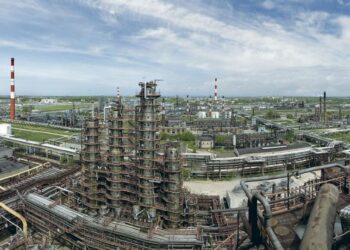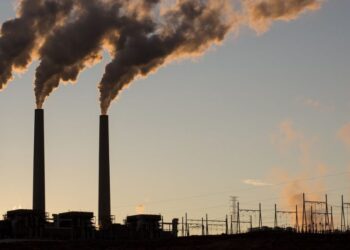Scientists have finally explained the mysterious increase in methane – a potent greenhouse gas – in the atmosphere in 2020: it’s because of wetter, warmer conditions in some regions but also, ironically, lower emissions of a polluting gas, according to work unveiled.
Researchers had been surprised by a sharp increase in the concentration of methane (CH4, the same molecule as natural gas) in the atmosphere in 2020, despite the containments associated with the Covid-19 pandemic.
The slowdown in economic activity had indeed resulted in a decrease in methane emissions from the fossil fuel industry.
In a study published in the journal Nature, led by Professor Shushi Peng of Peking University, an international team of scientists reveals the key to the enigma, which can be explained by two phenomena.
The first factor is a lower presence in 2020 of hydroxyl radicals (OH), which are mainly responsible for the elimination of methane in the atmosphere.
These OH, present in infinitesimal quantities and with a life span of less than a second, are “the Pac-Man of the atmosphere: as soon as they see something they eat it and disappear”, explains the French researcher from the Commissariat à l’Énergie Atomique et aux énergies alternatives (CEA) Philippe.
Ciais, who co-led the study at the Laboratory for Climate and Environmental Sciences (LSCE).
Excitement?
But these OH with super-cleaning powers are linked to nitrogen oxide (NOx) emissions, a pollutant from transportation in particular, whose emissions have decreased during containment.
The researchers have thus put their finger on a paradox: when pollution decreases, methane increases.
The second factor identified is related to increased natural methane emissions from wetlands.
Microorganisms present in swamps or peat bogs naturally produce this gas.
These areas are “very sensitive to climate,” says Marielle Saunois of the LSCE. “Microorganisms will produce more methane in warmer, wetter climates.”
In 2020, wetter and warmer conditions in the high northern latitudes and the northern hemisphere tropics account for more methane production, the researchers believe.
The lessons of the year 2020 are therefore very important for the climate: they signal a possible “runaway” warming, which could in turn produce more harmful emissions, feeding a vicious circle.
The study also points out the paradoxical effect of the decrease in pollution. “When you reduce NOx emissions by about 20%, you can increase methane emissions twice as fast, and that surprised us a lot,” says Philippe Ciais.
Faster and stronger
Emissions control programs may thus increase methane in the future.
“So if we want to keep the objectives of the Paris Agreement we will have to act even faster and even stronger to lower the sources of methane,” he pleads.
Methane is the subject of particular attention in the fight against climate change because, although it has a much shorter life in the atmosphere (about ten years) than CO2, its warming power is much greater: 28 times more over 100 years.
This gas is responsible for about one third of global warming since the Industrial Revolution.
Its emissions are mainly (60%) linked to human activity, on which it is therefore possible to act: fossil fuel industry, agriculture, breeding, waste… The rest comes from wetlands.
A conundrum remains as the concentration of methane continued to increase in 2021.
But the researchers already have some leads: “it seems, according to very preliminary results, that we still have a problem at the OH level”, says Philippe Ciais.
The phenomenon could be explained by the only partial recovery of air transport – whose role in the production of NOx at high altitude is very important – and by a still weak activity of transport in the United States and India.






